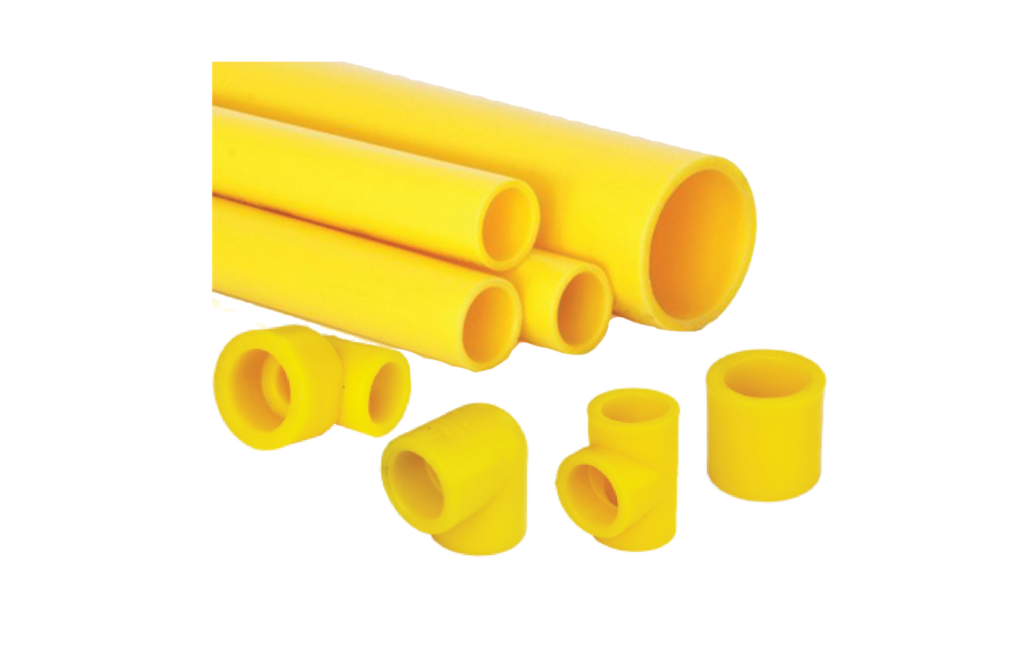
Efficient and reliable fluid transportation is paramount across a myriad of industries, ranging from essential water supply and agricultural irrigation to complex industrial processes. In this dynamic landscape, Medium Density Polyethylene (MDPE) pipes have emerged as a preferred choice due to their exceptional durability, flexibility, and chemical resistance. However, like any piping system, MDPE pipes can encounter issues, with leaks being a significant concern. In this comprehensive guide, we will delve deep into the world of MDPE pipe installations, exploring the common challenges faced and focusing extensively on the intricate art of leak detection and repair techniques. Additionally, we will illuminate the instrumental role played by Plasco Pipes in providing innovative and effective solutions for leak-free MDPE pipe installations.
Unraveling Common Issues in MDPE Pipe Installations
MDPE pipes undoubtedly offer a multitude of benefits, yet they are not impervious to challenges that might arise during installations. Let’s acquaint ourselves with some of the common issues that can potentially affect MDPE pipe systems:
Leakage: Leaks can emerge due to an array of factors, including improper installation practices, joint failure, corrosion over time, or even external damage caused by unforeseen circumstances.
Joint Displacement: The occurrence of poorly connected or misaligned joints can lead to joint displacement over time, which not only contributes to leaks but can also severely compromise the overall efficiency of the system.
Cracking: While MDPE pipes boast remarkable durability, they can develop cracks due to a variety of reasons, including exposure to extreme temperatures, sudden pressure surges, or impacts from external sources.
Corrosion and Erosion: The effects of prolonged chemical exposure, the presence of abrasive particles, or exposure to corrosive environments can gradually degrade the structural integrity of MDPE pipes.
Significance of Effective Leak Detection and Swift Repair
Leakage within MDPE pipe systems can usher in an array of undesirable consequences. Apart from the apparent issue of water wastage, leaks can lead to a significant decrease in system efficiency, introduce environmental concerns due to contamination, and significantly escalate operational costs. Consequently, the implementation of meticulous leak detection and a proactive approach to repair strategies become vital in order to mitigate these potentially crippling effects. Employing the right strategies ensures the sustained longevity and optimal performance of MDPE pipe installations.
Exploring Intricate Leak Detection Techniques for MDPE Pipes
Visual Inspection: Commencing with the basics, regular visual inspections are crucial for identifying visible leaks, corrosion, and potential areas of concern.
Pressure Testing: Employing pressure tests on the system can provide valuable insights by monitoring pressure drop over time, aiding in the pinpointing of elusive leaks.
Acoustic Leak Detection: This advanced technique employs specialized equipment to detect the sound generated by escaping fluids from leaks, making it particularly useful for larger systems or industrial setups.
Thermal Imaging: By utilizing thermal cameras, one can identify temperature variations caused by leaks, making them visually detectable even in concealed areas.
Dye Testing: Introducing fluorescent dyes into the system facilitates the identification of leaks under ultraviolet (UV) light, allowing for accurate identification.
Efficacious Repair Solutions for MDPE Pipe Leaks
Compression Fittings: For addressing small leaks, compression fittings come to the rescue by clamping securely over the affected area, effectively halting the leakage.
Electrofusion Repair: Leveraging the power of electrofusion techniques, one can skillfully join a new section of pipe to replace the damaged portion, creating a seamless flow.
Hot Gas Welding: When faced with larger leaks or damaged sections, hot gas welding emerges as a reliable method, involving the fusion of a replacement piece with the existing system.
Saddle Clamps: Saddle clamps can be ingeniously utilized to create a new connection over a leak, effectively isolating and rectifying the affected area.
Patch Repairs: Specialized patches or repair kits enter the picture to provide a temporary yet effective solution for addressing minor leaks.
Plasco Pipes: Pioneering Excellence in Leak-Free MDPE Installations
Amidst the complex landscape of MDPE pipe installations, one name shines as a true trailblazer – Plasco Pipes. Plasco Pipes has etched its name as a prominent figure in the industry, not merely as a manufacturer, but as an institution dedicated to innovative solutions and unwavering quality. With an unwavering commitment to sustainable practices and a keen focus on customer satisfaction, Plasco Pipes has rightfully earned its place as a trusted name in the realm of fluid transportation systems. Whether it’s a large-scale water distribution project or an intricate industrial application, Plasco Pipes stands ready, armed with expertise and products to deliver nothing short of reliable, durable, and efficient piping solutions.
Concluding Remarks: Navigating Leak-Free MDPE Pipe Systems
In essence, the presence of MDPE pipes has heralded an era of exceptional fluid transportation capabilities. However, this journey is not without its challenges, and among the most pertinent is the need to address leaks effectively. Swift detection and efficient repair not only prevent wastage and disruptions but also contribute to a greener environment. By employing cutting-edge leak detection techniques and employing suitable repair solutions, industries can seamlessly navigate the intricate world of MDPE pipe systems. Plasco Pipes, with its unwavering dedication, stands as a beacon of hope, assuring a future marked by leak-free MDPE pipe installations, where reliability and efficiency stand tall.
